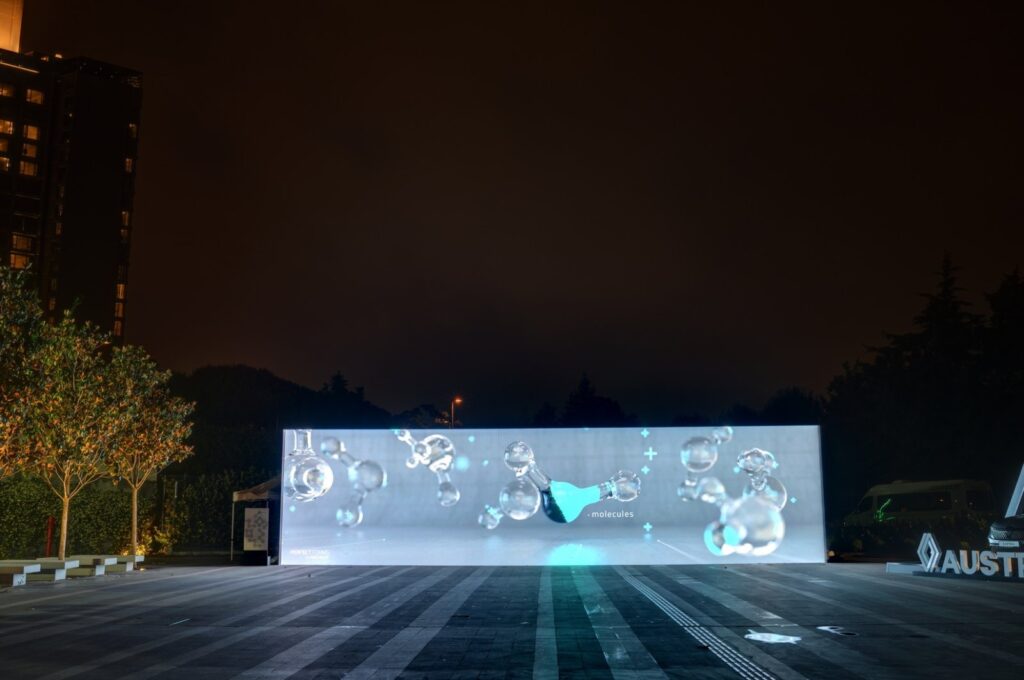
Gemma White
With more than 1,000 official portraits, and numerous unofficial ones, Queen Elizabeth II is one of the most depicted women in the world.
The monarch recently added another to her vast collection, her official portrait to mark her platinum jubilee.
While most portraits painted or photographed during her 70-year reign have followed protocol, or at the very least an expected etiquette, a few have raised eyebrows and caused heated debates along the way.
The Queen by Lucien Freud, unveiled in 2001, was deemed “extremely unflattering” by The Telegraph, because of its realistic portrayal, while an offering by Justin Mortimer in 1997, which was commissioned by the Royal Society of Artists, showed the queen’s head not attached to her body.
“I wanted to get away from the royal aspect and paint a picture of a person rather than the queen,” he said.
There was also an unofficial painting this year, by a humanoid robot, who created a piece using AI technology.
From favourite photographers to monarchs who used their portraits to send global messages, here’s an insight into why the official pictures are so important.
Who has painted the queen?
:quality(70)/cloudfront-eu-central-1.images.arcpublishing.com/thenational/SK5S4ILKB4VLFM6QO6DZJ3PE6A.jpg?w=810&ssl=1)
The queen has sat for many artists through the years, with Pietro Annigoni, Nicky Phipps and Chinwe Chukwuogo-Roy all having been called upon.
Freud’s sitting took 18 months to finish. It was completed in 2001, but immediately became divisive over how he had captured the monarch.
Queen Elizabeth has also posed for celebrated photographers, such as Cecil Beaton, who photographed her many times and was also called upon to capture the royal babies.
Celebrated American photographer Annie Leibovitz photographed the queen twice, first time in 2007, when she became the first American to be asked to create an official portrait.
“I felt that because I was an American I had an advantage over every other photographer or painter who had made a portrait of her,” she said. “It was OK for me to be reverent.”
Among the most famous unofficial portraits are the Andy Warhol screen prints of images of the monarch from her silver jubilee which, although unsanctioned, were later bought by the Royal Collection.
Why are portraits of the queen commissioned?
:quality(70)/cloudfront-eu-central-1.images.arcpublishing.com/thenational/I76LRGZUNNFEJIEWG76MNAVHOM.jpg?w=810&ssl=1)
Portraits of the queen are commissioned for a number of official purposes.
They may be used as photographs during state visits, or to mark a particular anniversary. They are also often displayed in public and used on coins, banknotes and stamps.
The first portrait of Queen Elizabeth to appear on a coin was in 1953 — her coronation year — when sculptor and medallist Mary Gillick worked from a portrait that society photographer Dorothy Wilding had shot of the young queen in profile. Gillick’s work became known as The First Definitive Coinage Portrait, 1953.
When did royals first start having portraits done?
Portraiture in England grew in the mid-15th century during the Tudor period. Notable portrait artists of the time include Hans Holbein the Younger and Lucas Horenbout, already established names in Europe.
During Henry VII’s reign, from 1485 to 1509, there was a rise in realistic portraiture after the widowed monarch commissioned a piece with the hopes of securing a new wife. It was Henry VII’s son, Henry VIII, who heralded the popularity of the art bringing portraitists to England from Germany and the Netherlands.
By 1536, Henry VIII had employed Holbein the Younger as his court painter, and the artist would depict the king many times, along with his wives Jane Seymour, Anne of Cleves and Catherine Howard.
Elizabeth I – the world’s first influencer?
Crowned queen on January 15, 1559, Elizabeth I used her portraits not only to show her power, but also to promote her purity as “The Virgin Queen”. She also saw to it that her portraits evolved throughout her 45-year reign.
In one of the most famous, the Ditchley Portrait, in which she wears a vast bejewelled white gown, she stands on a globe with her feet firmly in England.
Each new piece included further symbolism to portray how she wanted to be seen, manipulating her image in a way that we similarly see social media influencers doing today.
Courtesy: thenationalnews
The post The significance of royal portraits in the UK, from Henry VII to Elizabeth II appeared first on The Frontier Post.








